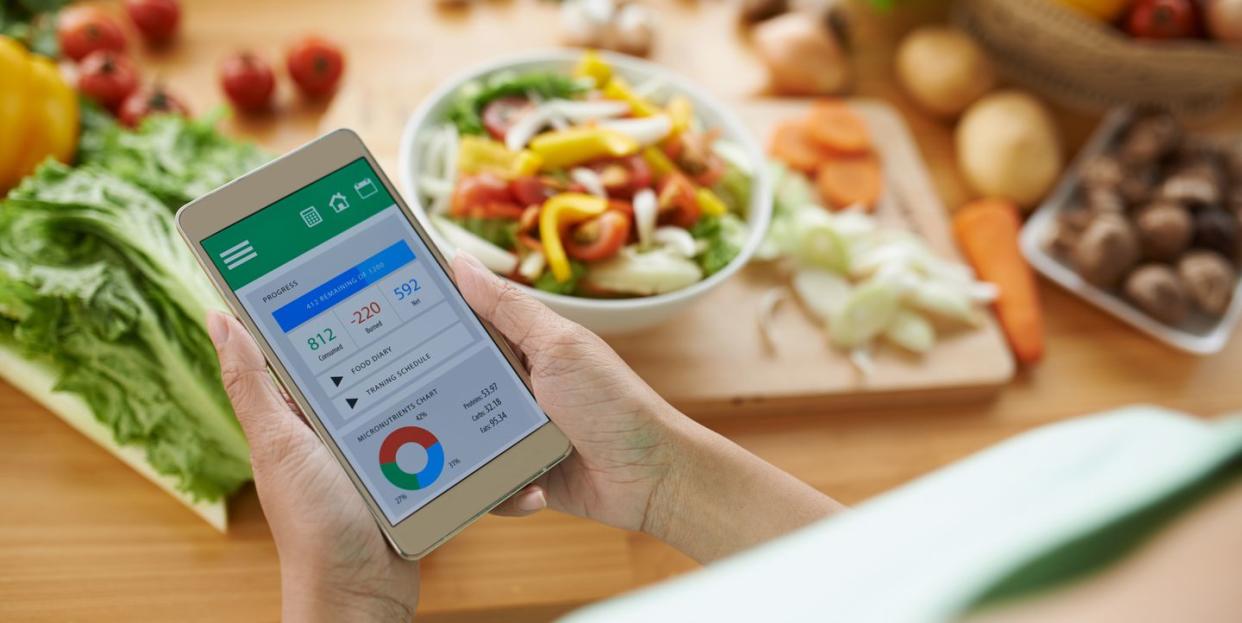How Many Calories Should I Eat to Lose Weight?

If you're hoping to lose weight in the new year, odds are someone will tell you the answer is simple: eat less, lose more. Someone else will probably tell you that, since one pound of fat is equal to roughly 3,500 calories, all you have to do is simply delete that number of calories from your weekly diet and - voila - the scale will go down.
But anyone who's been frustrated by the number on a scale - even after following these so-called proven weight loss tips - can tell you that there's more to it than that. For starters: not all calories are created equal.
What to Know About Nutrition
"Calories matter when it comes to weight loss and maintenance, and in order to lose weight, you must take in less energy than you expend," says Erin Palinski-Wade, R.D., author of Belly Fat Diet for Dummies. "But how much energy you burn each day is dependent on your [basal] metabolic rate, as well as your physical activity."
Your basal metabolic rate - aka how much energy you use - is determined by the number of calories you burn during digestion, Palinski-Wade says. A calorie from a simple-to-digest source, like the simple sugars in soda, can be converted into energy easily so your body doesn't have to work as hard, she explains. But a calorie that comes from a lean protein or resistant starch, like the fiber in beans and lentils, is harder for the body to break down. "This means more energy will be burnt up during the digestion of these foods, increasing the total amount of calories you burn during the day," Palinski-Wade says.
Think about it this way: If you eat a 1,600-calorie diet that's rich in simple sugars, Palinski-Wade says your body will need to burn about 100 calories during digestion. But if those same 1,600 calories come from fiber and protein-rich foods, then you'll burn closer to 300 calories while you digest. "That difference in calorie expenditure can have a big impact on body weight over time," she says.
The type of calories you consume can also help quell or fuel feelings of hunger and satiety. Case in point: Because those simple sugars are so easy to digest, your body is ready for more faster - it's why you're still ravenous even when you just downed a bag of M&Ms. If you do that all the time, then you're likely to continuously feel hungry and unsatisfied. This can lead to eating more calories throughout the course of the day, and if you consume more than you burn, then it will impact your ability to keep weight off long-term, Palinski-Wade says.
The Exercise Equation
Nutrition isn't the only part of the weight-loss game - making time for fitness matters, too. The Centers for Disease Control and Prevention (CDC) recommends adults move their bodies at a moderate intensity for 150 to 300 minutes, or 2.5 to 5 hours, a week to help prevent chronic diseases like heart disease, type 2 diabetes, and cancer. And while that's a solid jumping off point, if you want to lose weight then you still need to move enough so that you're burning more calories than you're consuming, says Carrie Dorr, founder of PureBarre and the holistic wellness platform Life Smart by Carrie Dorr.
"I view weight loss as a mathematical equation," she says. "If the calories your body is burning at rest (while not exercising), plus the calories burned during exercise are more than the calories you are consuming, you lose weight."
That's why it can be helpful to choose workout routines that'll help rev your metabolism, so you continue burning calories long after you finish exercising. It's called excess post-oxygen consumption, or EPOC, and high-intensity interval training (HIIT) is a common method that gets your body into this state of after-burn. It's also super popular because, while intense, the workouts are often short - making them ideal for busy women on the go.
But Dorr is quick to point out that this workout style isn't your only option. "A combination of aerobic workouts [like walking or running] and strength training are best for weight loss, as well as overall wellness," she says.
The Bottom Line
To truly answer the question of, "how many calories should I eat to lose weight?," you have to be aware of your total caloric needs and intake, Palinski-Wade says. To do this, it's widely accepted to follow the Harris-Benedict equation. The first thing you need to know is your basal metabolic rate, or BMR, which you can figure out by plugging your age, height, and weight into this calculator. Then, choose your daily activity level - ranging from sedentary to extra active - and follow the suggested equation. This final number will give you the total number of calories you need in order to maintain your current weight. Once you have that, you can adjust appropriately to lose weight.
Otherwise, remember to "focus on a meal plan that's rich in fiber, plant-based fats, and lean proteins to promote satiety," Palinski-Wade says. "This will naturally help you to control your portions and lose weight while taking in nutrients that promote health." You can also use ChooseMyPlate.gov to learn more about the five food groups considered to be the building blocks of a healthy diet, based on recommendations from the United States Department of Agriculture.
A good rule of thumb: fill half of your plate with fruits and veggies, one-quarter with protein, and the rest with whole grains. Round it out with a glass of milk or a cup of yogurt and you're all set - no calorie-counting required.
('You Might Also Like',)

